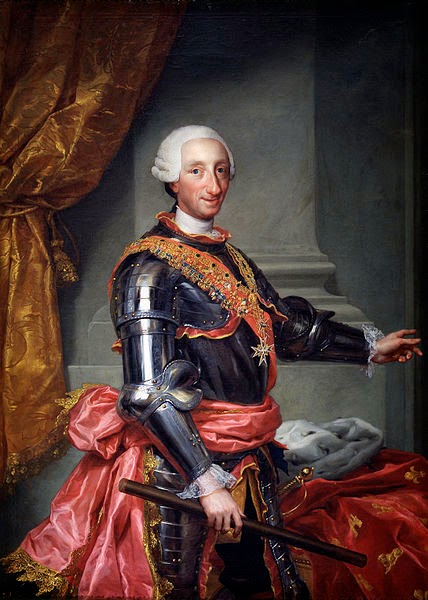In 1700, Carlos II, the last of the Habsburg kings of Spain, died childless. The throne passed to his nephew Philippe, a member a France's royal family of Bourbon and a grandson of King Louis XIV. The rest of Europe was alarmed. They feared that the balance of power would be upset with Spain and France united under the Bourbon family. Thus, the War of Spanish Succession began. An alliance of England, Austria, the Dutch Republic, and Portugal fought against Spain and France. At first it seemed that the Bourbons had no chance of winning against the alliance, but then the French began to win some important victories. In 1713 a peace was negotiated. According to the Treaty of Utrecht, the Bourbon claimant was recognized as King Felipe V of Spain. However he was required to give up any claim to the French throne, thus eliminating the possibility of the union of the two countries. Also, Austria took over Spanish possessions in Flanders and Italy, and England took Gibraltar which guards the entrance to the Mediterranean Sea.
The Bourbon dynasty ruled Spain for the remainder of the eighteenth century. Felipe V was succeeded by his son Fernando VI, who in turn was succeeded in 1758 by Fernando's half-brother, Carlos III. Carlos was the greatest of the Bourbon kings of Spain. Although he ruled as an absolute monarch, he was strongly influenced by the ideas of the Enlightenment. He sought to make Spain a more modern and progressive country, and passed many reforms, decreasing the influence of the Church and the Inquisition, and improving the economy and colonial policies. The people of Madrid gave him the nickname of "El Rey Alcalde" (The Mayor King) because of his many projects to modernize and beautify the capital city.




Fascinating! Thanks for taking time to share with us.....
ReplyDeleteThanks, Barbara. I'm glad that you are enjoying my little history lessons.
Delete